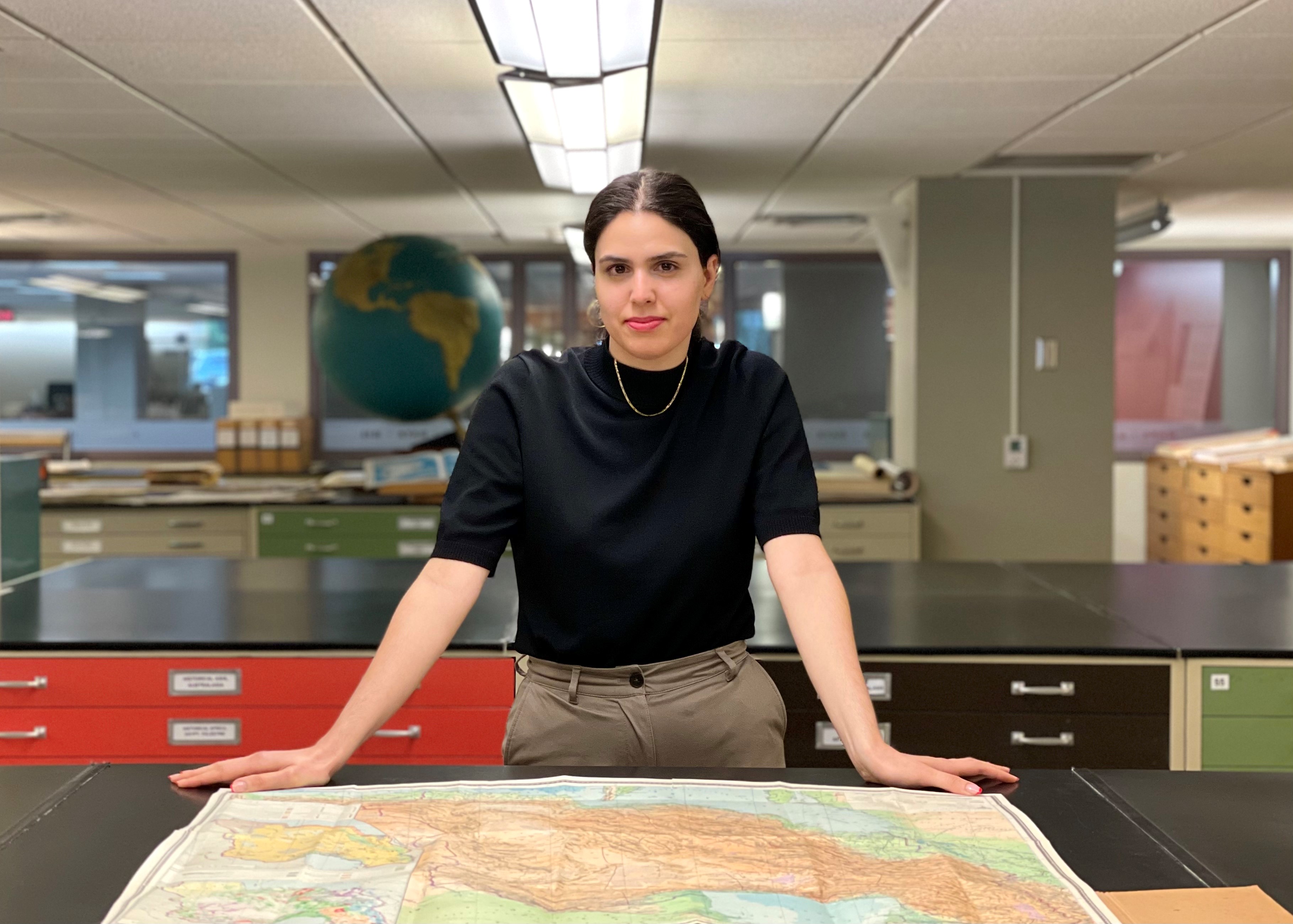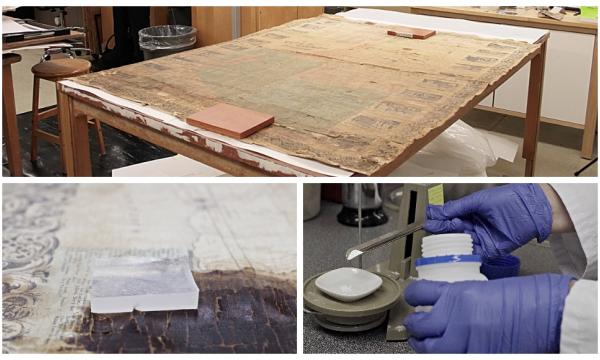
Saman Goudarzi’s eyes light up when she opens a drawer in the maps room at Mills Memorial Library.
As McMaster’s cartographic resources librarian, she pulls a map and expertly speaks about what it shows, noting its special features.
Goudarzi’s role is both challenging and exciting as curator of an expansive collection that includes tens of thousands of maps dating as far back as 1486.
She first became captivated with the documentation of space and place when she took her first geography class as a student at University of Toronto Scarborough. Enrolled in International Development Studies, she planned to major in environmental studies. However, it was the required introductory geography class that inspired her to successfully pursue a major in human geography with a minor in geographic information systems.
Since then, Goudarzi has worked in India as a researcher and cartographer for a non-profit organization, undertaking research on internet and digital technologies from policy and academic perspectives. Most recently, she was a library assistant at the Map and Data Library at University of Toronto before coming to McMaster this past spring.
We spoke with Goudarzi about her new role, what makes the maps room at Mills Memorial Library so special, and how she plans to share her passion for maps with the community.
What does your role entail?
I’m the cartographic resources librarian at the Lloyd Reeds Map Collection within Mills Memorial Library. Essentially, I’m the keeper of the many spatial resources in our collection. These resources include the typical print maps that we’re all familiar with but also atlases, globes, aerial photos, and fire insurance plans. I’m responsible for managing and maintaining these items so they are kept safe, organized, and in good shape for people to use. On top of that, I provide support to users visiting the space, whether that’s one-on-one assistance with finding or interpreting a resource or teaching a workshop to a class of students.
What drew you to this position?
I’ve always loved libraries. In my opinion, the public and academic service that libraries provide is vital to academic knowledge production and I wanted to contribute to that in some way. I also consider myself a map geek, so I love the opportunity that this position gives to assist anyone who comes into the space needing support with a personal or academic project. Since I started this position during the spring term, I’ve interacted mostly with people from the public. It’s been lovely to work with folks from different parts of the community, and I’m excited to work more with students once the fall term begins.
How would you describe McMaster’s maps room to someone who’s yet to engage with it?
Firstly, everyone is welcome to visit the maps room. We are a large space located on the first floor of Mills Memorial Library and offer a vast collection of cartographic resources. This includes print maps stored in map cabinets, books and atlases relating to different aspects of geography, and various globes that present the world through different lenses. For example, we have a celestial globe that shows the locations of stars in our night sky. There’s also a teaching area integrated into the room that features desks, a smartboard, and white boards. It’s important to note that many of our historical resources are also digitized. So, if there’s an item that someone wants to refer to on their own time outside of the maps room, it’s likely that they can find a digital copy on our website.
What are you most looking forward to in this new role?
I’m looking forward to learning more about the McMaster community as we get more users coming into the space. I was a teaching assistant at the University of Toronto and enjoyed interacting with students and learning from them, so another part of this position that excites me is the opportunity to engage with students and gain insight on their perspectives and how they approach different geographical subjects. On top of that, I also look forward to connecting with the professors who frequently work with the maps in our collection and learn about the research they’re doing, as well as learn more about how they’re using our collection to support their teaching.
What kind of plans do you have to engage the McMaster community with the space?
It’s common for different classes to come into our space for an instructional session led by the maps centre. Depending on the class, they’ll learn about one or more resources as it relates to the course’s subject matter. The students may also learn about how to find relevant cartographic resources and be given some time to explore the map cabinets themselves. Other times we’re not so involved with the instruction and rather the professor will come in with their class and use the space how they’d like. In terms of future plans to engage folks with the space, I hope to collaborate with archives and research collections and the Sherman Centre to host instructional sessions on a range of topics including the use of archival materials as historical evidence and critical approaches to cartography. I’d love to engage the greater Hamilton community as much as possible as well, since our space is open to those individuals, too.
Do you have a favourite map or map collection?
One of my favourite types of maps are fire insurance plans. They are large scale maps that outline urban communities in incredible detail. They were used by insurance companies to analyze the fire risk of different human-made structures – such as houses, schools, or factories – in a city. These maps began to proliferate in the late 19th century and illustrate details from property lines and street widths to the shape of and material used to construct different properties. They don’t exist for all of Canada but when they do, they provide very stark details of different regions of a city. It’s like historical Google Maps.
What is something we might not know about you that you’d like to share?
My parents have taken me hiking since I was young, and I enjoy it a lot. My introduction to the city of Hamilton was via the Bruce Trail. Now that I’ll be in Hamilton more often, I’m looking forward to exploring the many trails and waterfalls in the area.

